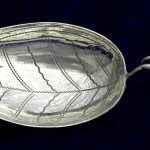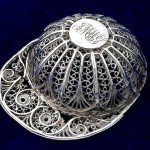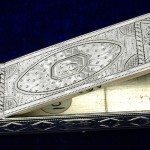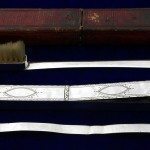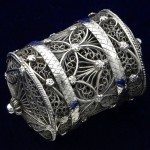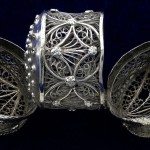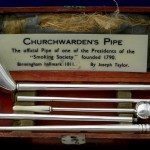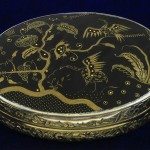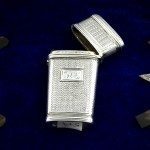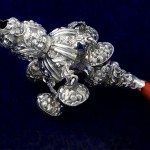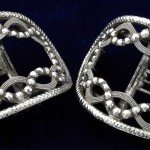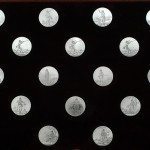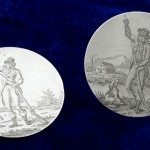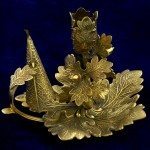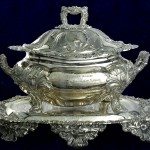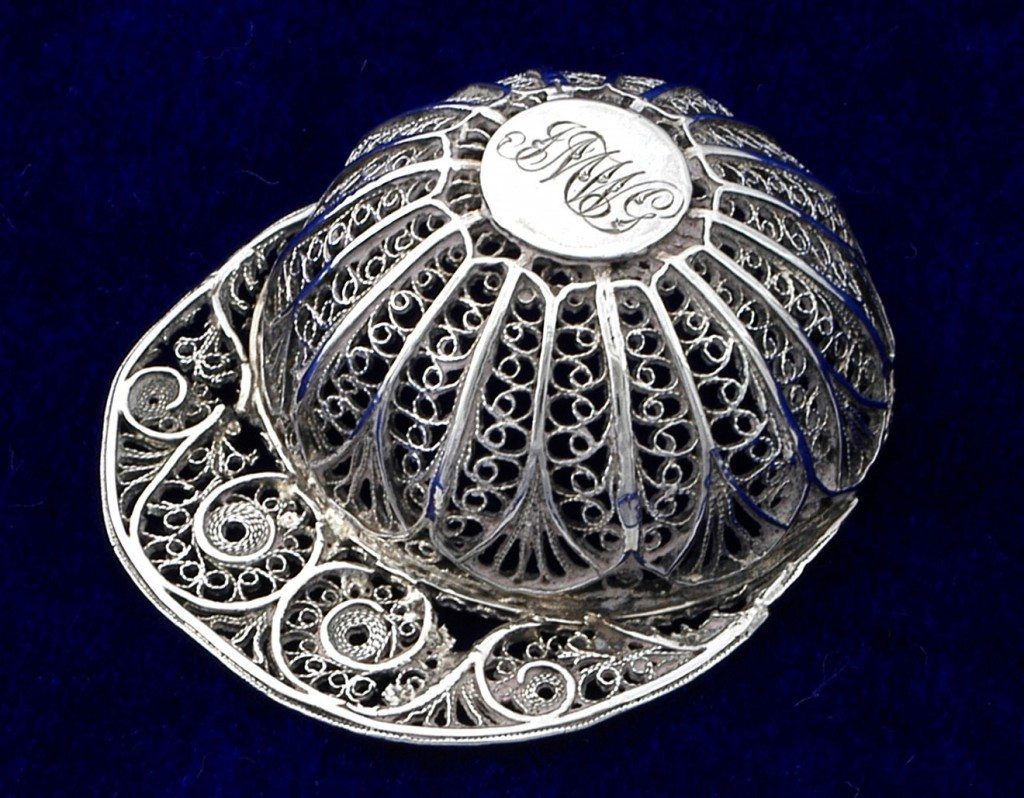Caddy Spoon, probably Samuel Pemberton, c.1800
Image from: Birmingham Assay Office.
This jockey cap caddy spoon is in filigree technique which uses thin gold, silver or copper wire, plain or twisted. It is flattened during manufacture. Ornaments are usually openwork or soldered on a metal base. The word ‘Filigree’ originated from the Latin “Filum” – thread and “granum”-grain. Filigree was exempt from hallmarking.
« Previous in this sectionNext in this section »Continue browsing this section
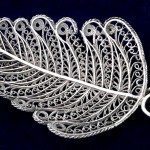 Silversmiths and Silverware in late 18th and early 19th century Birmingham
Silversmiths and Silverware in late 18th and early 19th century Birmingham
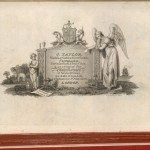 Birmingham Silversmiths: the Taylors
Birmingham Silversmiths: the Taylors
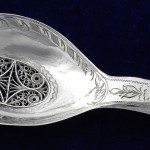 Birmingham Silversmiths: The Pembertons
Birmingham Silversmiths: The Pembertons
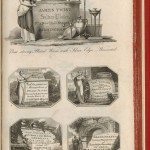 Birmingham Silversmiths: The Willmores and Linwoods
Birmingham Silversmiths: The Willmores and Linwoods
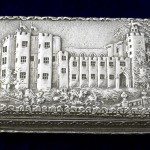 Birmingham Silversmiths: Nathaniel Mills
Birmingham Silversmiths: Nathaniel Mills
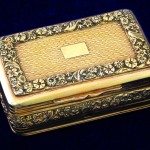 Birmingham Silversmiths: William Lea & Co
Birmingham Silversmiths: William Lea & Co
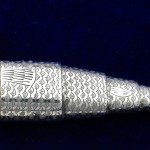 Vinaigrette, Maker unidentified, 1817
Vinaigrette, Maker unidentified, 1817
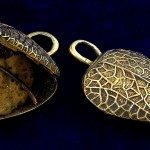 Pair of Vinaigrettes, Joseph Willmore, 1825
Pair of Vinaigrettes, Joseph Willmore, 1825
 Vinaigrette, Nathaniel Mills, 1835
Vinaigrette, Nathaniel Mills, 1835







